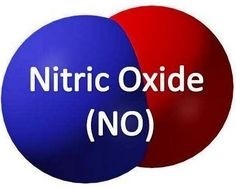

 919-999-0831
919-999-0831





Follow us on Social Media!


Follow Carolina Total Wellness on Social Media!


Shane Hemphill, MD

Part II – Low SIgA And How Do We Treat
So your functional medicine provider ordered a Comprehensive Stool Analysis and your SIgA levels are found to be low. What is your next step? The answer is going to vary from person to person, but the ultimate answer is in finding the root cause.
This may include evaluating for and removing a food sensitivity, mold sensitivity, or infection that has over time depleted the immune response.
Once we have eradicated our offending agent we need to look at ways to improve our SIgA levels.
As a general rule the first step is to use an anti-inflammatory diet such as a Mediterranean diet. This is rich in fruits, vegetables, nuts, legumes, olive oil, and fish and low in red meat and saturated fats. One can also eliminate fried foods, processed foods, sugary snacks and soda.
More specific treatments Include:
A diet rich in Polyphenols such as cacao, green tea, and grapeseed extract which have shown to increase SIgA levels.
Saccharomyces Boulardii – This probiotic yeast has been shown to raise SIgA levels while also being very effective against Clostridium Difficile and Candida Overgrowth.
Colostrum – an Immunoglobulin secreted in the early stages of breast-feeding. This has shown to stimulate SIgA levels.
Beta Glucans – This is a type of soluble fiber found naturally in a variety of food sources including oats, barley, rye, rice and mushrooms like Reishi and Shiitaki.
Bone Broth – This is made by simmering the bones and the connective tissue of animals. This forms a stock for making soups, sauces and gravies. Depending on which part you use it contains vitamins, minerals as well as collagen and other amino acids that increase SIgA levels.
Fat Soluble Vitamins – Vitamin A is needed for the transport of SIgA over the mucosal lining. It is suggested that Vitamin A is also involved in the synthesis of other immunoglobulins and has an important influence on our humoral immune system.
Stress Management – Last but not least, Cortisol is the main stress hormone that can decrease SIgA levels. We need to look over your current stressors or perceived levels of stress and then work to reduce them. This can be done through aerobic exercise, yoga, breathing techniques, meditation as well face to face conversations with your friends, family or therapist.
Our functional medicine physicians can help you understand the root cause of low SIgA and design a treatment plan specifically for you, please call our office at 919-999-0831 to get scheduled.
Your Partner in Health!
Shane Hemphill, MD

Clarissa A. Kussin, ND, FMCHC, ERYT-500

As we journey through spring, it’s crucial to ensure our homes remain safe havens for our respiratory health. Many common household cleaners contain chemicals that provoke or worsen asthma or COPD symptoms, making cleaning uncomfortable and potentially dangerous. It is also important to consider our indoor air quality by using more eco-friendly products and lowering our risk of asbestos exposure which can be found in some houses, and in the long run, can affect the lungs developing. Today we’re focusing on sourcing lung-friendly household products to support your well-being.
1. Understanding Lung-Safe Products: Choosing the right household products can significantly impact respiratory health. Opting for lung-safe options reduces exposure to volatile organic compounds (VOCs), fragrances, and other irritants. Look for products labeled as “fragrance-free,” “non-toxic,” and “low VOC.”
2. Recommended Brands: We’ve curated a list of reputable brands known for their commitment to lung-safe products:
3. DIY Lung-Safe Alternatives: For those who prefer a hands-on approach, crafting your own cleaners allows full control over ingredients. Simple, lung-safe recipes often include ingredients like baking soda, vinegar, castile soap, and essential oils (for those not sensitive to them). Check out reputable sources like the Environmental Working Group (EWG) for safe DIY recipes.
4. Resources for Lung-Safe Living: Stay informed and empowered with these valuable resources:
Remember, small changes can make a big difference in supporting respiratory wellness and investing in your health is an investment in a brighter and more fulfilling future. Stay safe and breathe easy!
If you’re ready to experience the transformative benefits of health coaching, reach out to us today! Our team of experienced health coaches are here to guide you on your journey to optimal health. Call 919.999.0831 to get scheduled.
To your health and happiness!
Clarissa A. Kussin, ND, FMCHC, ERYT-500

Sara Yadlowsky, FMHC

Aging is inevitable. Irrespective of our efforts to appear youthful or feel younger, aging will catch up with us eventually. However, vitality is the key to aging gracefully.
Vitality embodies an energy of involvement, appreciation, and liveliness. It represents a harmonious blend of pleasure, purpose, and significance. When we are full of these feelings, we experience a vibrant, open responsiveness.
An excellent question to ask yourself is: How vibrant am I? Vitality manifests as an ability to openly express profound emotions. It’s evident in hearty laughter, streams of tears, and a willingness to engage fully without concerning oneself with outcomes, approval, or social media “likes.”
The most vibrant individuals:
This level of aliveness represents soulful fitness, which is not tied to appearing younger than our years. Soulful fitness results from a stead fast commitment to and consistent practice of the vitality-enhancing measures mentioned above.
An excellent idea is to meditate daily with the thought that this could be your last day alive, and let this awareness guide you to fully embrace and cherish each day.
Aging can be viewed as a profound opportunity to establish deeper roots and witness more abundant blossoms. We can perceive the beautiful trajectory from innocence (youth) to ambition (productive years) to wisdom (later years)as a magnificent symphony, with each phase a complete and essential component of a breathtaking unity.
Aging is not an error or shortcoming, but an invitation to embrace life more fully.
To schedule a new patient or health coaching appointment, please call our office at 919-999-0831.
Your Partner in Health!
Sara Yadlowsky, FMHC

Didem Miraloglu, MD, MS

| Nitric oxide (NO) is a remarkable molecule that plays a crucial role in various physiological processes within the human body. Discovered in the late 18th century, and its importance has been extensively studied and recognized in the fields of medicine, biology, and biochemistry. In fact in 1998 Nobel Prize in Physiology or Medicine was awarded to Robert Furchgott, LouisIgnarro, and Ferid Murad, for their discoveries of NO as a signal molecule in the vasculature and specifically in the control of blood pressure. NO is a unique signaling molecule that influences numerous cellular pathways, contributing to cardiovascular health, immune function, neurotransmission, and even cellular defense against pathogens. The synthesis of nitric oxide is achieved through the enzymatic action of nitric oxide synthase (NOS) on L-arginine, a semi-essential amino acid found in the body. There are three isoforms of NOS: endothelial NOS(eNOS), neuronal NOS (nNOS), and inducible NOS (iNOS). Each isoform is expressed in specific tissues and cells and responds to different stimuli. eNOSis predominantly present in endothelial cells, contributing to vasodilation and regulating blood flow. nNOS is found in neurons and plays a role in neuro transmission, while iNOS is induced in response to inflammation or immune challenges. The regulation of nitric oxide production is a tightly controlled process. Various factors, including calcium ions, cofactors like tetrahydrobiopterin, and the availability of L-arginine, affect NOS activity. This precise control ensures that NO is produced when needed, preventing excessive generation and potential cellular damage. Nitric oxide is a key player in cardiovascular health. It acts as a vasodilator, relaxing the smooth muscles in blood vessel walls, which leads to increased blood flow and improved oxygen and nutrient delivery to tissues. Dysfunction in the NO pathway is associated with numerous cardiovascular diseases, including hypertension, atherosclerosis, and heart failure. Pharmaceutical agents that enhance NO production or mimic its actions, such as nitroglycerin and sildenafil (Viagra), have become essential treatments for these conditions. The immune system relies on nitric oxide to fight off pathogens and defend against infections. When activated by cytokines and other immune molecules, iNOS produces NO in macrophages and other immune cells. Nitric oxide acts as a potent antimicrobial agent by damaging bacterial DNA, proteins, and lipids. Furthermore, it helps regulate the immune response and plays a role in resolving inflammation after an infection has been controlled. In the nervous system, nitric oxide is a critical neurotransmitter involved in various processes, such as learning and memory, synaptic plasticity, and neuronal communication. It modulates the release of neurotransmitters like dopamine, serotonin, and glutamate, contributing to mood regulation and cognition. Moreover, NO has been linked to neuroprotection by its ability to act as an antioxidant and counteract oxidative stress-induced damage. Neurodegenerative diseases, such as Alzheimer’s and Parkinson’s, involve oxidative stress, and researchers are exploring the potential of NO-based therapies to mitigate neuronal damage. Due to its diverse roles in numerous physiological processes, nitric oxide has garnered significant interest as a potential therapeutic agent. Researchers are exploring its use in various medical applications, including wound healing, erectile dysfunction, and respiratory disorders like pulmonary hypertension. Additionally, NO-based therapies are being investigated in the context of cancer treatment, where NO has shown potential to inhibit tumor growth and sensitize cancer cells to radiation and chemotherapy. Nitric oxide, once regarded merely as an air pollutant, has emerged as a fundamental molecule essential for life and well-being. Its roles in cardiovascular health, immune function, neurotransmission, and neuroprotection highlight its significance in maintaining the body’s delicate balance. As our understanding of this remarkable molecule deepens, we are likely to witness further advancements in medical therapies that harness the potential of nitric oxide for improving human health and well-being. To schedule a new patient appointment, please call our office at 919-999-0831. Your Partner In Health, Didem Miraloglu, MD, MS |
 |
Functional medicine is a science-based health care approach to assess, prevent and treat complex chronic disease.
![]() Learn More
Learn More
After a brief allergy test, you can begin sublingual immunotherapy (SLIT), or allergy drops under the tongue. No more allergy shots!
![]() Learn More
Learn More
Learn how to prepare for your visit and what to expect at your initial consultation and at your follow-up visits with our office.
![]() Learn More
Learn More